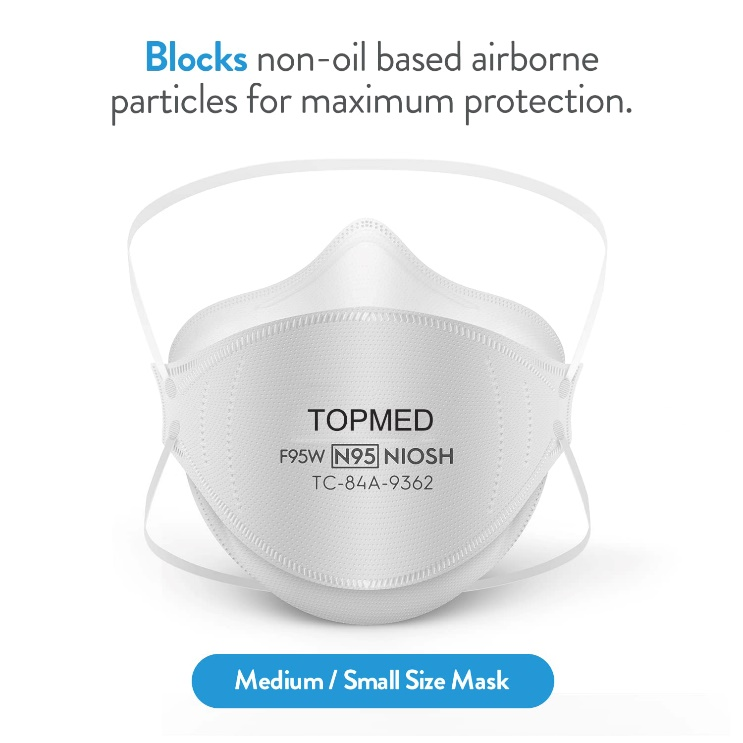Understanding N95 Respirators: An In-depth Guide

Introduction
The N95 respirator, a critical piece of personal protective equipment, has garnered significant attention in recent times due to its role in mitigating the spread of airborne diseases. This article provides a comprehensive overview of N95 respirators, including their history, design, filtration efficiency, proper usage, and their significance during pandemics and other health crises.
I. History of N95 Respirators
The history of N95 respirators can be traced back to the mid-20th century. In 1972, the National Institute for Occupational Safety and Health (NIOSH) introduced a classification system for respirators, and the N95 designation was born. The "N" stands for "not resistant to oil," and the "95" indicates the respirator's filtration efficiency, which is at least 95% against airborne particles.
II. Design and Structure
N95 respirators are designed to provide a secure and efficient seal against the wearer's face to filter out harmful airborne particles. The key components of an N95 respirator include:
1. Filtering Material: The heart of an N95 respirator is the filtering material. Typically, it consists of multiple layers of polypropylene or similar synthetic materials that capture particles through mechanical filtration.
2. Exhalation Valve: Some N95 respirators feature an exhalation valve that allows the wearer to breathe out easily while maintaining a tight seal during inhalation. This design helps reduce heat and moisture buildup within the mask.
3. Head Straps: N95 respirators have adjustable head straps to ensure a snug and comfortable fit. These straps are typically made of elastic materials.
4. Nose Clip: A flexible metal nose clip or foam padding at the top of the mask helps contour the mask to the shape of the wearer's nose, further enhancing the seal.
III. Filtration Efficiency
The filtration efficiency of N95 respirators is their defining feature. N95 respirators are capable of filtering out at least 95% of airborne particles with a size of 0.3 microns or larger. This includes many common respiratory hazards such as dust, pollen, and various pathogens, including viruses and bacteria. The filtration mechanism primarily involves three processes:
1. Inertial Impaction: Particles are captured when they collide with the fibers of the filter material due to their inertia.
2. Diffusion: Smaller particles move erratically and are more likely to come into contact with filter fibers, increasing the chances of filtration.
3. Electrostatic Attraction: The synthetic filter material is electrostatically charged to attract particles, enhancing filtration efficiency.
IV. Proper Usage of N95 Respirators
To ensure maximum protection and efficacy, it is essential to use N95 respirators correctly:
1. Fit Test: Before using an N95 respirator, ensure that it fits properly. NIOSH recommends conducting a fit test to confirm the seal around your nose and mouth.
2. Hand Hygiene: Wash your hands thoroughly with soap and water or use hand sanitizer before and after handling an N95 respirator.
3. Inspection: Examine the respirator for visible damage or defects, such as tears, holes, or damaged head straps.
4. Donning and Doffing: Put on the N95 respirator by holding it in place over your nose and mouth, adjusting the head straps, and ensuring a secure fit. Avoid touching the front of the respirator. When removing, do so without touching the front, and dispose of it in a proper receptacle.
5. Seal Check: Conduct a seal check each time you don the N95 respirator to ensure an airtight fit. Cover the respirator with both hands and inhale. If it collapses slightly and remains sealed to your face, the fit is correct.
6. Continuous Usage: N95 respirators are designed for single-use and should not be reused. Replace the respirator if it becomes damaged, soiled, or if breathing becomes difficult.
V. Significance in Pandemics and Health Crises
N95 respirators have a crucial role in combating pandemics and health crises, as they provide a high level of protection against airborne pathogens. During outbreaks of diseases like influenza, SARS, MERS, and COVID-19, healthcare workers and the general population rely on N95 respirators to reduce the risk of transmission.
1. Healthcare Workers: N95 respirators are essential for healthcare professionals who work in close proximity to infected individuals. They offer a higher level of protection compared to standard surgical masks.
2. General Public: In times of pandemic or high transmission, the general public can benefit from N95 respirators, especially when social distancing measures are challenging to implement. They provide a personal barrier against infectious respiratory droplets.
3. Air Travel: N95 respirators are also valuable for air travel, as they can reduce the risk of contracting infectious diseases in confined spaces like airplanes.
4. Protection for Vulnerable Populations: Vulnerable individuals, such as the elderly or those with underlying health conditions, can significantly benefit from N95 respirators to minimize the risk of infection.
VI. Limitations and Challenges
Despite their effectiveness, N95 respirators have limitations and face challenges:
1. Supply Shortages: During health crises, there can be a shortage of N95 respirators, leading to rationing and prioritization for healthcare workers.
2. Fit Testing: Proper fit testing is essential for N95 respirators, but not all individuals have access to this testing, leading to potential leaks and reduced protection.
3. Discomfort: Prolonged use of N95 respirators can be uncomfortable due to heat and moisture buildup, making compliance challenging.
4. Misuse: Incorrect use and reuse of N95 respirators can diminish their effectiveness and pose health risks.
VII. Conclusion
N95 respirators play a crucial role in protecting individuals from airborne pathogens. Understanding their history, design, filtration efficiency, proper usage, and significance in pandemics is vital for ensuring their maximum effectiveness. While N95 respirators are a powerful tool in the fight against infectious diseases, it is equally important to address their limitations and challenges to improve their accessibility and efficacy in times of need.
 EN
EN
 AR
AR
 BG
BG
 HR
HR
 CS
CS
 DA
DA
 NL
NL
 FI
FI
 FR
FR
 DE
DE
 EL
EL
 HI
HI
 IT
IT
 JA
JA
 KO
KO
 NO
NO
 PL
PL
 PT
PT
 RO
RO
 RU
RU
 ES
ES
 SV
SV
 TL
TL
 IW
IW
 ID
ID
 LV
LV
 LT
LT
 SR
SR
 SK
SK
 VI
VI
 HU
HU
 TH
TH
 TR
TR
 FA
FA
 GA
GA
 CY
CY
 IS
IS
 LA
LA













